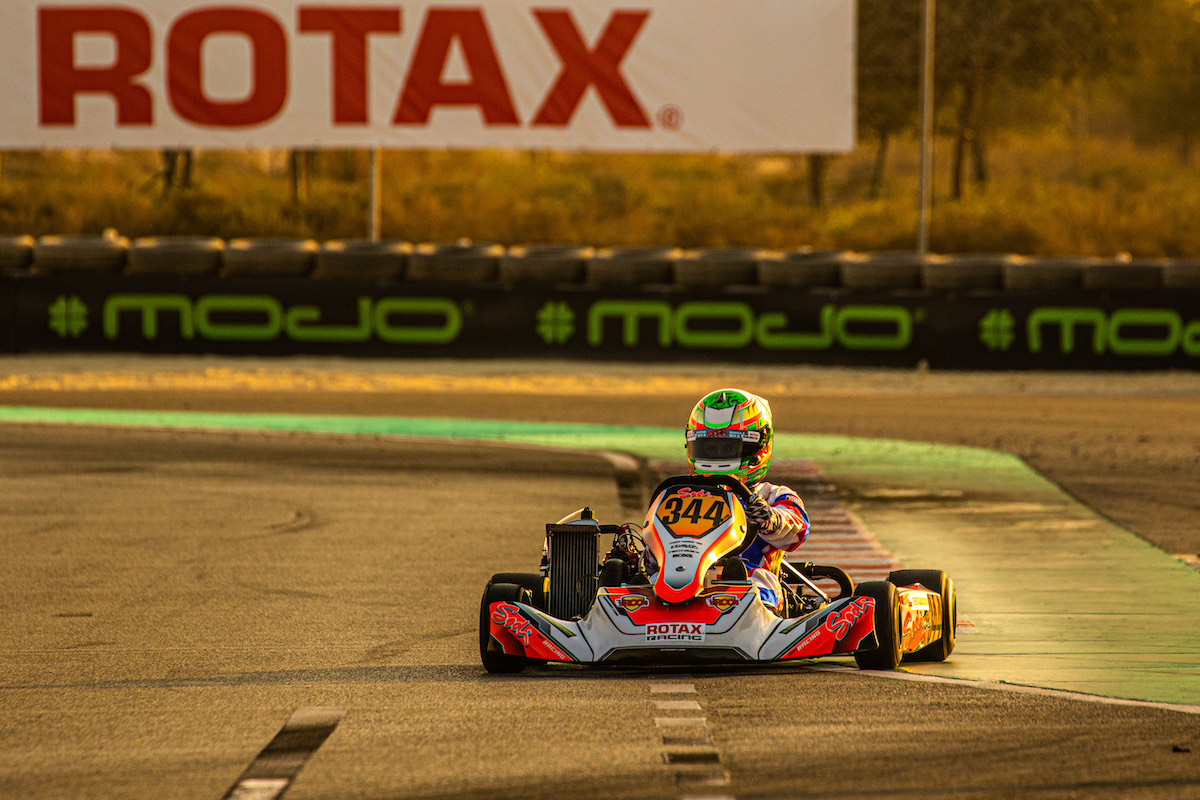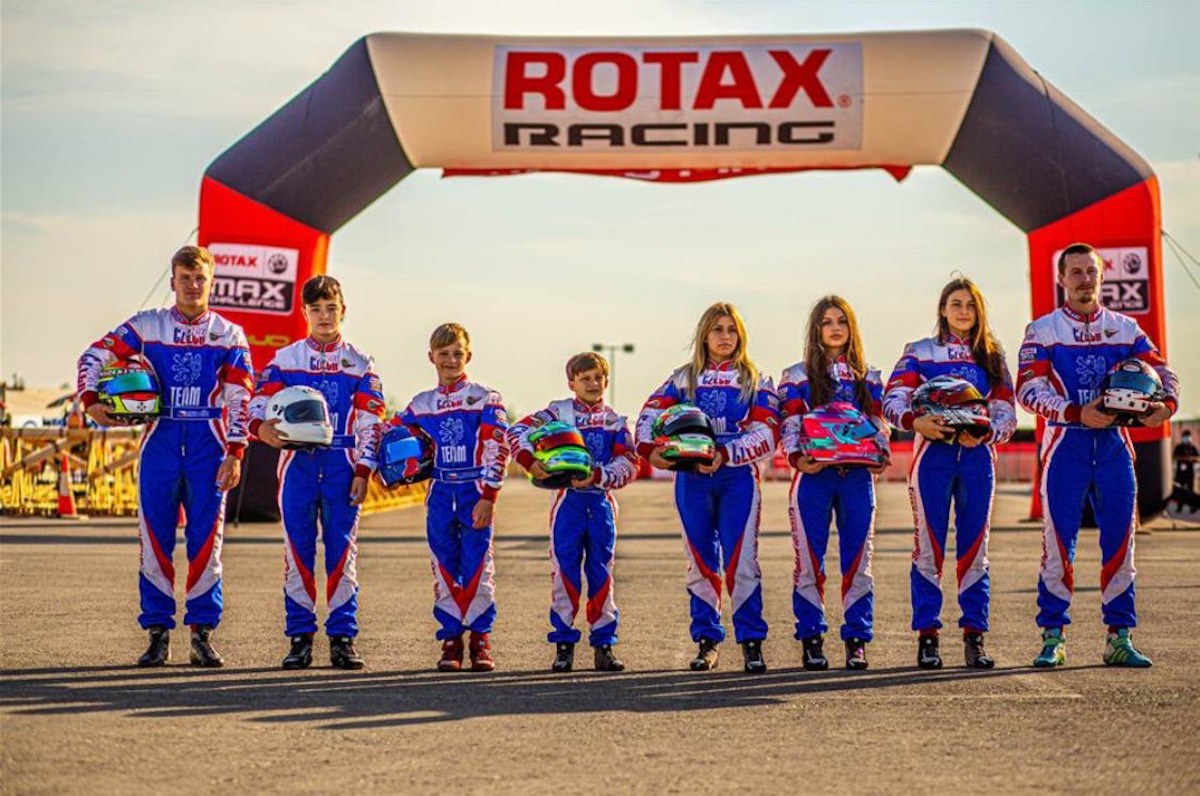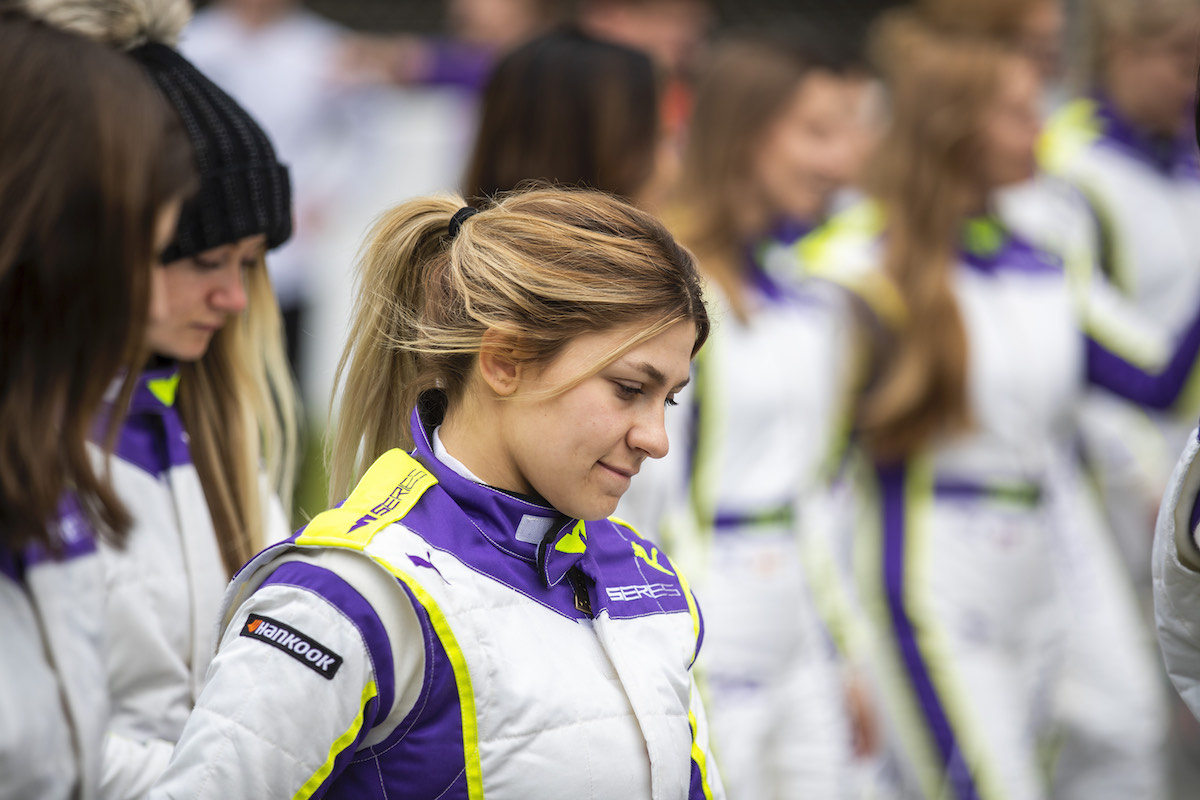
Photos: W Series
When the third W Series season opens in Miami the grid will include five championship newcomers. One of them, Tereza Babickova, will be starting her first ever car race.
The 19-year-old has not lacked confidence in her karting career, and she has made a name for giving as good as she gets in on-track duels.
Babickova has been toughened up by the intense competition from both her male rivals in karting and perhaps even more relentlessly from her three racing siblings, sisters Eliska and Petra and brother Zdenek.
In testing she has impressed W Series with her ability to take on board lessons learned and to get up to speed quickly. And she appears totally unfazed by the huge leap from karting.
But can a car racing novice really shake up the established order in the W Series?
Speaking ahead of the season, the Czech driver explained to Formula Scout how the move from senior karting to the Formula 1 support programme in less than five months came about, as well as the pros and cons of sororal rivalry.
A dominant on-track victory in the Senior category at the Rotax Grand Finals in Bahrain at the end of 2021, fighting off competition from 2020 FIA world champion Callum Bradshaw, is “what caught the attention of the people from W Series,” she believes.
Starting the final from pole, a sideswipe from Bradshaw dropped her back to third. Within three laps, however, she was back in front and demolished the strong field to take a comprehensive win, before two post-race time penalties, for being out of the tramlines at the start and for a pushed back bumper after contact, demoted her to fourth in the final standings.
Stepping up to single-seaters hadn’t been in her plans for 2022 – “I was going to do karting again, because I just enjoy it” – but then, out of the blue, W Series got in touch to invite her to join a prospective driver test in US-specification Crawford Formula 4 cars at Inde Motorsports Ranch in Arizona.

After Bahrain, “I received an email from W Series [asking] if I would like to come to Arizona. I never put in any registration, nothing.”
At first, she thought it must be a wind-up: “Actually, I thought this person cannot be serious. I thought somebody was making fun of me,” she laughs.
With the five-day test starting on January 31, there was little preparation time for someone who had “never done any sort of touring cars or any GT, any single seaters, nothing ever in my life.”
She managed “two or three days in a Tatuus Formula 4 car at Aragon to get some sort of feel of the car, of what more or less to expect.”
From the 15 drivers selected, “me and one more girl were the only ones that didn’t have any experience. And it was surprisingly really good,” she says of her junior racing car baptism.
Understandably nervous, when the first session didn’t go well she started to doubt herself. Adjusting to the weight transfer of the car “was stressing me out a bit and I was probably like two and a half or three seconds off the other girls. And I was just thinking, I need to go quicker.”
On the first day, “we mainly focused on the big things, and I was actually progressing pretty well every session. Then on the second day, I made a massive improvement; the learning curve went like that,” she says tracing an exponential upwards curve with her hand. “We started concentrating on the details and we were actually, I think, sixth quickest or something like this.”
W Series is notoriously secretive about disclosing laptimes either during or even after a test, making it almost impossible for interested observers to establish actual times and rankings.
Considering that most of the invited drivers had prior single-seater experience, her progress over the two days of allotted running time clearly impressed the W Series bosses, who, she believes, took her inexperience into account. “That’s what got me the seat, that I could manage to be quite quick after two days when the rest of them has maybe a few years in cars.”

She was one of five drivers selected to join the drivers returning from 2021 in a three-day test at Barcelona in the series’ own Formula Regional cars, although again without much advance warning. “They called us a week or maybe 10 days before Barcelona [to tell us] who is actually accepted to do the test.”
This meant another race for Babickova to set up a chance to drive the more powerful FRegional car. “Luckily, we managed to find two days again in Aragon in a FRegional car because it’s very different – the downforce and the steering forces are higher – and I just wanted to know if I can even drive it. I wasn’t sure my training plan is enough.
“I wanted to at least get a feel of it before I go because it was important for me, probably Barcelona was even more important than Arizona since we were so close to it already.”
In Barcelona, she was “before the first practice again really nervous, then first practice wasn’t very good either, but then I was actually progressing really a lot”. With her first set of new tyres fitted, she began to see the improvements come, “and I think we had six sessions [in total]; of that five I would say were really good and one wasn’t perfect.”
While she managed to avoid any spins or, even worse, a crash, “I just wasn’t happy with my performance.” Feeling under pressure to deliver a fast time on new tyres, “I just overheated the tyres and then I could never get a time out of them. That just comes with more mileage and experience, but I was really disappointed.”
What conclusions could she draw from her first experience with the FRegional car after the Barcelona test?
“I was actually better in the F3 car than in the F4 car in my opinion, [I] found it easier to drive,” she says. “On new tyres we need to work more to get the most out of them; on old tyres we’re quite good and on race pace we’re really good.”
Once she’d got the tyres up to temperature, she says, her race pace was “not too far off Jamie [Chadwick]’s”.
To get close to Chadwick, the undoubted star of W Series – a double title winner and Williams F1 development driver – on her first acquaintance with the car, or pretty much any car, is still remarkable.

She seems to have adapted quickly to the huge difference in driving technique between single-seaters and karting.
“For me it came naturally. Obviously, the speed was a bit scary at first, but I got used to it fairly quickly and it wasn’t too difficult for me, but obviously we’ll see how the first race in Miami goes and then after we can judge a bit more.”
The braking was the hardest aspect to get used to “because in karting you just brake by feeling, go into the corner full gas and go out and then in single seaters, you have to start thinking about braking shape for [each] corner and weight transfer. The weight goes all the way to the front and then suddenly you don’t have any rear.”
W Series will help her develop both on and off the track. “When you meet all the girls, all of them are amazing, everyone is really professional. You can see that they live for it and it’s just so amazing to see what community you’re coming into.”
Racing against established drivers “can make you a bit hesitant, but I just see it as a huge opportunity to race against [them] and to learn,” she says. “It makes you work harder to try to be as good as them.”
While W Series cars are centrally run, the drivers are allocated into teams of two for marketing reasons and Babickova will compete in the livery of the Puma team, alongside the most experienced driver on the grid, Emma Kimilainen, 13 years her senior. For Babickova, having last year’s third-place finisher in the championship to learn from is the perfect scenario for her maiden season.
“When they called me about the team decision, the first thing I said was ‘Thank you so much, guys’. I’m so excited to be with Emma because she has so much experience and I think she’s willing to share and help me and push both of us for the Puma team to try to get onto the podium. I can learn a lot from her because she really is an amazing driver.”

For 2022, W Series retains its Formula 1-support slot with four rounds outside Europe, starting in Miami where W Series will stage the circuit’s inaugural race.
Babickova is particularly excited about Miami, “since nobody’s driven the track. It’s a street track, it’s something new and it will be same for everyone,” creating a level playing field for the rookies against their more experienced rivals.
“And it’s just shows you where you are, whether that’s bad or good, where you stand at the minute and what you need to improve and how much. I think it just gives you a perfect benchmark since nobody’s been there.”
Coming into her maiden season and taking on W Series’ established stars, though realistic about her targets, her goals are clear. “I’m aiming to learn as much as possible and enjoy it in my first year of single-seaters,” she says, “but in my head I’m already looking at the podium and I hope to end up there a few times this year.”
She currently has no plans to gain extra mileage by running a parallel campaign in another category “because the setup really different to the W Series and I actually don’t think it would give me as much as I would need.” But, budget-permitting, she plans “to do as many days as possible” of testing in a FRegional car run to W Series specifications.
And she would miss karting too much to give it up completely, so intends to “still do say four or five races a year.”
Babickova laughs when Formula Scout tells her that Tomas Enge, the only Czech to race in F1 and a family friend, has called her a “ballsy driver”, someone who is not afraid to be quite forceful on track.
“Tomas is right,” she says. “Definitely I don’t lack confidence. If you’re going tell yourself it’s not possible, then you’re not gonna do it.”
She is, she says “always confident and definitely aggressive.” Even when not the quickest, “I will always be the most aggressive and push my way through.”

Though many more girls are entering karting, it is still a male-dominated environment – out of 378 entries for the 2021 Grand Finals across categories, just 13 were girls – and hence, she feels, they need to stand up for themselves more.
“Racing with the boys, you need to really work on earning your respect. None of the guys wants to be beaten by a girl. They take it so badly, which I don’t really understand, like we’re all the same. When I was younger, when I would overtake [someone], they would just crash me out on purpose.”
Though she adds jokingly, “so then I started crashing people out and now everyone’s scared of me,” there is more than a hint of steel behind the smile.
She admits that her take-no-prisoners style “sometimes leads to a lot of crashes” but she feels she had to show she was no pushover. “I just feel like I had to earn my respect way more than other people did. And I think I worked really hard for it as well.”
Aside from the sporting aspect, her passion for karting derives from the close bond it brings with her family.
“I enjoy being with my family. That’s the main thing because we’re all together. I have three siblings [sisters Eliska, 16, and Petra, 15, and brother Zdenek, 9] that are racing as well and so my parents are always there for that reason.”
The siblings race for their family-run, TEPZ Racing Team, named after the initials of the four racers, and “now it’s like a huge family passion, even the grandmas, everyone loves it. Everyone watches every race. It’s quite cool.” All four earned the chance to race in the Rotax finals in Bahrain across different categories.
See also: The top karting stars of 2021
Babickova was six when her parents took her to try a kart as a way of developing her reactions and having some fun at the same time. “Our parents didn’t want us to go crazy on the roads when we got our drivers’ licences,” she explains.

“I absolutely hated it,” she confesses. “I never wanted to sit in the thing again.” Initially “it was only me and Elli because Petra was still too little and my brother hadn’t been born yet. Even though I think we were sort of pushed into it at first, we just started enjoying it more and more.”
From the age of three she had been training and competing as a gymnast, so karting initially had to be fitted in around her gymnastics, but “in 2014 we decided to stop with gymnastics because the two sports weren’t possible to do together.”
The three sisters regularly compete in the same races. Racing against her siblings is “terrible but amazing at the same time.” Their relationship rapidly switches from cut-throat competition to sororal support. “Sometimes we will try to get in each other’s head or be shouting at each other, then ten minutes later we’re each other’s biggest supporters.”
The rivalry is naturally at its most competitive with Eliska, just two years younger than Tereza. “We were always like the biggest enemies since we were born in every single sport. She was trying to be better than me in everything; I was trying to be better than her in everything and we still are to this day, and I think it motivates the both of us to go forward and do better.”
Eliska and Petra are competing against each other in the X30 Senior class this year while Zdenek has already taken his first win of the season in the X30 Mini class in Belgium. Could Tereza be the first of three sisters in single-seaters in the next few years?
She believes that her sisters want to avoid making the “same mistake as me,” meaning being unprepared if an opportunity to race does arise. “So I think they will want to do some days in F4 this year. If they can show something really amazing in karting and I think they’re actually doing really well this year, I think they will try to go the same path.”
